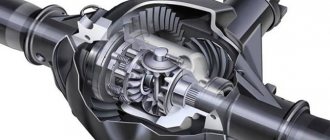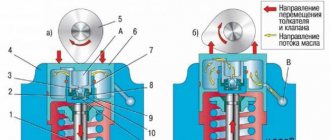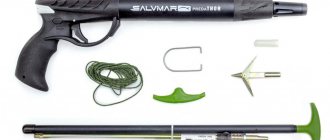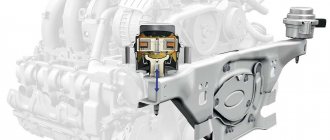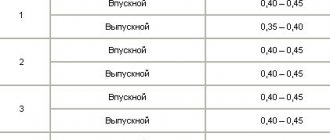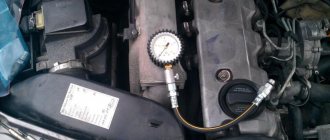Hi all! Many people want to get behind the wheel of a car and enjoy the benefits of a personal car. But before you do this, you have to go through a difficult learning curve. Practice clearly shows that the main problems arise with how to change gears correctly and with mechanics.
Initially, the most difficult thing for a beginner seems to be simply learning how to get going. But in just a few practical sessions this point can be mastered until it becomes automatic.
But switching to a manual transmission while driving is more difficult. This is a gradual process of developing a reflex that allows you to move from one speed to another in a timely manner and without being distracted by the lever itself, almost at the level of intuition.
The key rule is to always use the clutch pedal. In theory, you can learn to shift without a clutch, but then the box won’t last long and will have to be replaced soon. Therefore, when braking and accelerating, the clutch pedal and gearshift lever must work in tandem.
Important nuances
Ideally, the car should drive without jerking, moving from one speed to another. When buying a used car or a new car, all buyers always look at such a detail as the type of gearbox used. Objectively, the easiest car to drive is considered to be an automatic transmission. But it is important to understand that there are a number of types of gearboxes, and not a simple division into manual and automatic. We recently studied with you the features of sequential gearboxes, and also got to know the variator in more detail. I advise you to re-read and update your own knowledge regarding automobile gearboxes. In terms of reliability and durability, classical mechanics still firmly holds the first position.
When used correctly, the car can accelerate quite quickly, squeezing the maximum out of the installed engine. But when the engine is powerful, and the driver does not know how to shift correctly, then no amount of horsepower will help you.
One general principle applies to all manual transmissions. It consists in the fact that first the clutch is depressed, then the speed is switched, after which the clutch pedal is lowered.
Operating principle of a manual transmission
Initially, a manual transmission may seem like a difficult and inconvenient solution, since recently an increasing percentage of future motorists are learning to drive cars equipped with an automatic transmission. The reason is simple - such drivers do not have proper experience driving a car with a manual transmission.
At the same time, it is the manual transmission that allows you to fully understand the concept of “driving a car.” In order to learn how to drive a manual transmission and professionally drive a car with such a gearbox, you need to understand the circuit diagram of its structure and know the operating principle of its mechanisms.
So, a manual gearbox refers to stepped gearboxes, the principle of which is based on changing torque. Each stage has its own gear ratio (the ratio of the number of teeth of the driven gear to the number of teeth of the drive gear).
Passenger cars are usually equipped with a 4-speed, 5-speed or 6-speed gearbox. On trucks, the number of gearbox gears reaches 12 (due to the use of half stages for more efficient use of internal combustion engine torque under high traction loads).
Main parts and components of a manual transmission:
- input shaft (drive), secondary shaft (driven) and intermediate shafts with gears;
- gearbox housing;
- additional axle and reverse gear;
- gear lever;
- gear change mechanism with locking and locking device (gear shift);
- synchronizers;
As for the principle of operation of a manual transmission, to start the car moving, the gear shift lever is used, which is moved from the neutral position to the first gear position.
The locking mechanism fixes the position of the lever, preventing the transmission from disengaging. Engaging the gears causes the gears of the primary, secondary and intermediate shafts to engage.
Gears have different numbers of teeth. If the sum of the gear teeth on the drive shaft is half the number of gear teeth on the countershaft, the gear ratio will be halved.
For example, if the first gear has 20 teeth and the second has 40 teeth, then when the first gear rotates two times, the second gear will only make one revolution (gear ratio is 2). A car's manual transmission has a large set of gears.
By engaging different pairs, it becomes possible to change the overall gear ratio of the gearbox. It turns out that as a result of transmitting the rotational impulse of the engine input shaft through the intermediate axis to the secondary shaft of the gearbox, the gearbox distributes the load on the engine and controls the speed of the vehicle.
By means of an additional axis with a reverse gear, reverse movement (reverse) is performed. Synchronizers located in the intervals of the secondary shaft gears ensure smooth and silent gear shifting.
When to switch
Switching should be smooth, but at the same time fast.
Many are rightly interested in when exactly it is necessary to switch from one speed to another. Although there are different cars and boxes, there are averages. Namely:
- The first speed is intended mainly for starting, and is not used for active driving. The current speed here is from 0 to 20 kilometers per hour;
- The second speed is accelerating and is used for movement at low speed in the range from 20 to 40 kilometers;
- The driver must switch to third when he needs to accelerate from 40 to 60 kilometers per hour;
- The fourth is suitable for speeds from 60 to 80 kilometers per hour;
- Fifth and sixth speed for driving over 80 kilometers per hour.
These numbers are approximate and average, as there are a number of other factors that affect driving.
The presented diagram is relevant for cars that are not loaded and move along the road without resistance in the form of sand, deep snow or steep inclines. If there is such resistance, then it is recommended to switch to the next gear a little later.
Motorists and driving instructors have developed a useful reminder that they recommend that a beginner remember. The bottom line is this:
- It is always recommended to use first gear solely for starting;
- After the start, you should immediately turn on second speed;
- Second gear serves as acceleration speed on a manual transmission;
- The third is optimal when overtaking;
- The fourth performs best when driving in urban conditions;
- The fifth and sixth are used for expressways, highways and highways.
You can also shift out of order if necessary, shifting from high to low to apply engine braking.
There are a number of visual videos on the Internet about how to properly operate the gearshift lever on a manual car. Both high and low gears are discussed in detail.
Engine speed and gear shifting
The tachometer on the dashboard, if there is one, is one of the most visual “helpers” for correct gear shifting on a manual transmission. The main thing is to know the basic principles of how to navigate it. To do this, we conditionally divide the tachometer scale of a car with a standard gasoline engine into the following zones:
- 0-850 rpm - in this range the engine either does not work at all, or does so unsteadily, intermittently, gasping and coughing.
- 850-950 rpm is the so-called idle speed, which is needed to warm up the engine, diagnose it, stand in a traffic jam or at an intersection, and so on.
- 950-2000 rpm - low speeds, at which the torque produced is extremely low, and therefore it is not worth driving at them.
- 2000-3500 rpm is the optimal range for driving, and the upper limit is the point of maximum possible torque.
- 3500- ∞ rpm - high speeds, at which the torque no longer increases, and fuel consumption is still the same.
It is worth clarifying that depending on the make and model of the car, the upper limit of the optimal range for driving is slightly different. For example, on domestic VAZ cars it is 3000 rpm, and on some foreign cars it reaches 4500 rpm. Diesel engines have more modest performance. For your car, you can find out this figure from the technical specifications. A paragraph that indicates at what speed a particular power unit develops maximum torque. In the following examples, the figure 3000 rpm will appear, since it is relevant for most passenger cars with gasoline engines.
From the list considered, it follows that the correct gear shift will be one in which the engine speed does not go beyond the optimal range. That is, something like this. We engaged first gear, set off and accelerate until the engine spins up to 3000 rpm. This is the time to shift to the next one, that is, to second gear. Then we accelerate according to a similar principle.
To slow down, we do exactly the opposite. Let's say we are driving in fifth gear and the tachometer shows 2800 rpm. We release the gas until the needle drops to 2000 rpm. This is the best time to shift down into fourth gear. If we need to reduce the speed to some minimum, then it is not necessary to turn on the fourth. When the gears slow down, it is quite possible, and even necessary, to jump, matching the speed of movement with them.
Switching process
When driving straight and during a turn, the driver needs to change the current speed set on the mechanics.
This is done according to a certain algorithm, which can be represented as follows:
- With a tight movement, the clutch pedal is pressed to the floor with the left foot;
- At the same time, you must release your foot from the gas pedal;
- smoothly but quickly select the desired gear on the box;
- when passing the lever, you first return to neutral, and then to the required speed;
- then the clutch is released;
- at the same time, work begins with the gas pedal so as not to lose speed and revolutions;
- After the clutch is fully released, good gas is added.
There are no strict and rigid restrictions in terms of the sequence of transitions at speed. Nobody forces you to shift in a strictly specified order, from 1st to the last gear.
But if you skip speeds, then you will have to spend more time accelerating and the speed will begin to drop.
How to learn to drive a manual car
Start.
When you first try to learn how to drive manually, it is important not to rush, but to do everything consistently. Before you start driving, the first thing you need to do is fasten your seat belt. If training takes place in the warm season, you can open the windows to better hear and understand the engine. Next, you should adjust the seat so that you can reach and press the pedals without effort. At this point, you can learn to release the clutch smoothly.
Then you need to move the shift lever to the neutral position, from which it can move freely in different directions. After this, you can start the engine using the ignition key and pressing the clutch pedal all the way.
To start driving, you need to press the clutch pedal, shift to first gear, slightly lift your foot off the clutch and press the gas pedal. To start moving, the car needs to put in a lot of effort, which is why the engine may stall at this moment. A smooth start of movement is ensured by simultaneously pressing the gas and clutch pedals.
In order to engage the gear, you need to fully depress the clutch pedal and smoothly move the lever. If there is resistance or strange sounds, return the lever to its original position, release the clutch and press again. When the desired position is switched on, the force of the lever will decrease and its movement will stop as it collides with the limiter.
In frosty weather, you can start from second gear to avoid slipping or skidding. To do this, you need to select second gear and smoothly balance between the clutch and gas pedals.
Movement.
To move your car smoothly, you need to understand:
- at what point should you change gears;
- how to achieve optimal dynamics;
- what not to do so as not to break the gearbox.
Proper shifting of gears when driving ensures correct dynamics of the entire manual transmission system, extends its service life and reduces fuel consumption. The most important recommendation for novice drivers is to monitor the tachometer readings. At readings from 2.5 to 3.5 thousand revolutions per minute, the engine operates most correctly and there is no need to switch to another gear. At higher tachometer readings, it is necessary to switch to a higher gear to reduce the load. The clutch pedal should be pressed all the way down. When the speed decreases, it is necessary to switch to a lower gear. To drive without jerking.
When accelerating, you need to switch gearboxes one by one, starting from the first one and reaching the desired one. Switching through several stages is generally not prohibited, but you should do this with extreme attention to the clutch. If the pedal is not fully depressed, there is a risk of damage to the gearbox shafts.
Thanks to manual transmission, you can prepare in advance for difficult road conditions. For example, if you follow the traffic rules, changing gears to a lower gear is necessary:
- when approaching a steep climb;
- when driving down a dangerous slope;
- when overtaking;
- on sharp turns.
A manual transmission can help even in situations where you cannot use the brake. For example, on a slippery road or when driving downhill. In these cases, you can brake using the engine. You need to release the gas and shift from high to low gear until the speed drops. But do not increase the speed too much and, if possible, use the brake.
Reduce speed and stop.
To reduce speed, you need to switch to a lower gear. If the speed is too slow for the current gear, the car will vibrate as if it is about to stall. To reduce speed, press the clutch, release the gas, change gears, release the clutch while pressing the gas pedal. To stop, change gears one at a time until you are in first gear.
If you need to stop, press the brake with your right foot. When reaching a speed of 15 km per hour, the car will vibrate. At this moment, you need to fully press the clutch, move the lever to neutral and press the brake to finally stop.
You can stop in any gear. To do this, you need to fully press the clutch, press the brake and switch to neutral. But in this case, control over the car is weakened, so this method can only be used as a last resort. In any case, you can watch manual driving lessons for beginners, how to properly start with a manual, step-by-step instructions.
Choosing a trailer and rating the best manufacturers
The mistake of beginners is usually standard, and it lies in the inconsistent action of the manual lever and the clutch pedal. As a result, the car loses speed and sometimes stalls.
Motorists who have only recently gotten behind the wheel are often easily identified not only by the U icon on the glass, but also by absent-minded and abrupt switching.
When the car starts moving, inexperienced drivers regularly release the clutch early. As a result, the car jerks, and the transmission itself gradually fails.
Considering the speed ranges relevant for shifting gears, many believe that when the car is not traveling more than 40 km/h, there is no need to switch from 2nd to 3rd gear. But remember that a higher gear does not necessarily require an increase in speed. You can safely push the third, but at the same time drive the 40 kilometers set by the limit sign.
A higher gear only allows you to go faster. That is, when choosing speed 3, it will be easier for you to accelerate from 40 to 80-100 kilometers per hour, it will take less time and the engine will behave better than when accelerating from speed 2. Having the ability to speed up does not obligate you to speed up.
How to use the switch correctly
To avoid increased wear on the cassette on the rear wheel, the sprocket system on the front wheel, chain breakage and damage to the gear shifting system of your bike as a whole, you need to know a few basic rules for shifting gears. So:
1. When changing gears on a bicycle, you should not allow maximum chain misalignment, for example, such a position as front 1 - rear 8, and vice versa, is unacceptable.
Using the example of a 24 (3*8) high-speed transmission, we will show how to combine gears:
| Ahead | Behind |
| 1 (small) | 1-4 |
| 2 (average) | 3-7 |
| 3 (large) | 6-8 |
The easiest pass is when the stars are in a 1-1 position. As you ride, you should strive for a larger number, increase power and speed, but do not resort to maximum acceleration of the movement often, as this will add additional stress to both the transmission mechanism and the leg joints.
The main guideline is this: it should not be difficult for you to pedal, but not very easy either; the effort should be comfortable.
2 When you decide to change gears, this is especially important for the front sprockets, you definitely need to reduce the effort a little and do not press hard on the pedals. Why? The fact is that the front group of sprockets works with the upper part of the chain, which experiences maximum tension at the moment of movement, and therefore can break if you change the position of the speeds without stopping pedaling with force
3. You should only shift when you are on the move!
4. Do you need to change several speeds at once? Do it step by step, don't skip.
Also, when shifting, you need to squeeze the lever of the shifter, which is responsible for the front group of sprockets, as hard as possible.
How do you know if you did everything right? A great way to find out whether you have learned to shift gears correctly is to listen; if the chain is in place correctly, then you will not hear any extraneous sounds in the form of clanging or crackling - of course, provided that your chain is in proper condition, it is lubricated, not old and so on. The only thing a cyclist can hear is a small click.
How to catch and feel the moment when you need to change gears on a bicycle? An important condition for this is to learn to focus on your own feelings; if you don’t have enough strength and you start pedaling idly, then it’s time to switch to the next speed. So, when the answer to the question of how to change gears on a bicycle has become clear, you need to get as much of your own experience as possible in order to begin to feel the moment when and how you need to change gear
To do this, ride in different conditions, for example, on the highway, go up and down a mountain, feel how the revolutions of each wheel change as the speed on the bike changes. This is the only way you can gain experience working with a bike’s transmission and learn how to pedal at the optimal cadence for you.
So, when the answer to the question of how to change gears on a bicycle has become clear, you need to gain as much personal experience as possible in order to begin to feel the moment when and how you need to change gear. To do this, ride in different conditions, for example, on the highway, go up and down a mountain, feel how the revolutions of each wheel change as the speed on the bike changes. This is the only way you can gain experience working with a bike’s transmission and learn how to pedal at the optimal cadence for you.

